
Chicken lacks the fat marbling found in red meat, leaving it more prone to drying out during cooking. Also, because boneless cuts don't cook as quickly as bone-in cuts, they have more opportunity to dry out. The shape of chicken breasts and other cuts is another obstacle; varying thickness leads to uneven cooking, so thinner areas overcook and dry out by the time the thickest part safely cooks to 165 degrees Fahrenheit. When baking, minimize cooking time and ensure that boneless chicken cooks evenly to help keep your meal tender and juicy.
Step 1
Thaw chicken if it's frozen. While it's safe to bake frozen poultry, it won't cook evenly and come out moist. Put the chicken in the refrigerator one to two days ahead of time. Or, defrost by submersing it in cold water, as long as it's wrapped in a leak-proof package. Thawing takes one to a few hours, depending on the size of the cuts. Dump out the water and replace it with colder water every 30 minutes. Don't defrost chicken in the microwave, as this method partially cooks the exterior and the bird is likely to overcook and dry out in the oven.
Step 2
Preheat the oven to 500 degrees Fahrenheit. High heat with minimal cooking time yields a crisp exterior and a moist interior when you're baking chicken. Most home ovens need about half an hour to climb to this high a temperature.
Step 3
Lay a sheet of sturdy plastic wrap out over a large cutting board. Place the chicken on top, then cover it with a second sheet of plastic wrap. Because you have boneless chicken, you can pound it into a cutlet for faster cooking and a uniform shape conducive to even cooking. Do so with a meat mallet or rolling pin.
Step 4
Discard the plastic wrap and season the poultry to taste with whatever herbs, spices or other flavoring agents you choose to use. Use some salt and pepper, then add others: minced garlic, thyme, marjoram, oregano, rosemary and basil all work well on chicken. Or, give it some kick with turmeric, curry powder or a favorite chili pepper powder. You can also dredge the pounded chicken in flour to give it a nicely browned exterior.
Step 5
Line a baking tray with aluminum foil and lightly grease it with cooking oil or nonstick spray. Place the chicken on it and bake it in the upper third of the oven for approximately 15 minutes, turning it over once about halfway through, just until the outside is browned and the juices run clear when you cut into center of the chicken.
Related Articles

How to Make Crock-pot Chicken
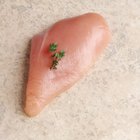
How to Preserve Chicken
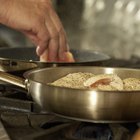
Can I Cook Chicken That's Been Thawed ...

How to Cook a Flat Chicken

How Do I Make Baked Boneless Chicken ...

How to Defrost a Chicken in a ...

How to Cook a Thin Breaded Chicken ...

Can I Cook Chicken Two Weeks After the ...

How to Bake Chicken at 375

Quick Ways to Cook Frozen Chicken
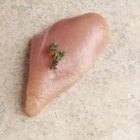
How to Cook Boneless Chicken Breasts in ...

How to Cook Poussin in an Oven

If Chicken Doesn't Smell Bad, Can You ...
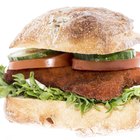
How to Cook Chicken Schnitzel

Does Chicken Have to Be Completely ...

How to Cook Chicken in Parchment Paper

How to Cook Drumsticks With Bread ...

How to Broil Chicken on the Bone
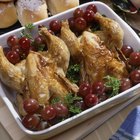
How to Cook a Cornish Game Hen in a ...

How to Soak Chicken in Cold Water
References
Tips
- Brining helps keep chicken moist, too. Fill a glass or ceramic dish with enough liquid to immerse the chicken. Use cold water or water mixed with juice, wine, vinegar, beer, tea, soy sauce or broth. Dissolve in approximately 1/3 cup of kosher salt per 4 cups of liquid. Add other desired flavoring agents, including herbs and spices and a sweetener like sugar, honey, brown sugar, maple syrup or molasses. Soak the chicken for two to six hours.
- Store uncooked chicken below 40 F. Use or freeze fresh chicken within two days of purchase.
Warnings
- Raw poultry contaminates surfaces with bacteria. Sanitize your hands and all kitchen items and surfaces after contact.
Writer Bio
Eric Mohrman is a food and drink, travel, and lifestyle writer living in Orlando, Florida. He has professional experience to complement his love of cooking and eating, having worked for 10 years both front- and back-of-house in casual and fine dining restaurants. He has written print and web pieces on food and drink topics for Visit Florida, Orlando Style Magazine, CrushBrew Magazine, Agent Magazine, Dollar Stretcher Magazine, The 863 Magazine and other publications.
Photo Credits
Polka Dot Images/Polka Dot/Getty Images